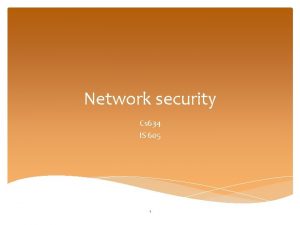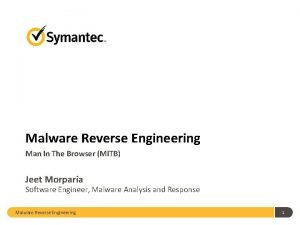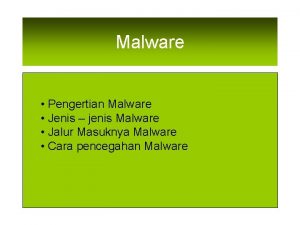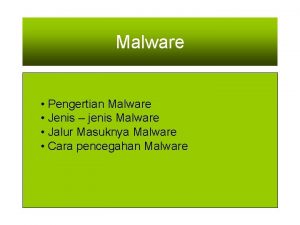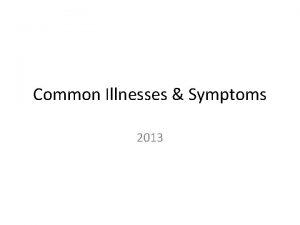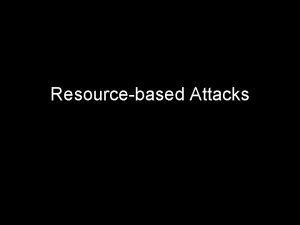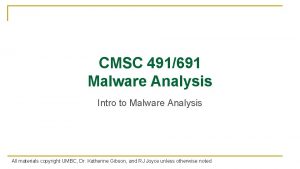Intro to Malware Attacks Symptoms of Virus Attack















- Slides: 15

Intro to Malware Attacks

Symptoms of Virus Attack • Computer runs slower then usual • • • Computer no longer boots up Screen occasionally flickers PC speaker beeps periodically System crashes for no reason Files/directories sometimes disappear Denial of Service (Do. S)

http: //cagle. com/teacher/ http: //www. cagle. com/news/hacker 1. asp

U. S. Businesses lost $5 billion to $6 billion due to computer viruses The following computers have been hacked: The Naval Ocean Systems Command NASA A British Nuclear Power Plant IBM The 2 nd Circuit Court of Appeals Capitol Hill The Defense Data Network The White House At least 2 viruses infiltrated Allied computers in 1991 during the Gulf War

There an estimated 30, 000 computer viruses in existence Over 300 new ones are created each month The first virus was created to show loopholes in software

A biological virus injects itself into a cell and uses the cell's existing chemistry to reproduce itself. A computer virus “piggybacks” on top of a program or document and “reproduces” (executes). Once a virus is running, it’s able to infect other programs or documents.

Worms and Trojan horses are actually more common today than viruses. Antivirus programs should offer protection against all viruses, worms, and Trojans. All of these types of programs are called malware.

A virus first runs when another program is executed. The virus loads itself into memory and looks to see if it can find any other programs on the disk. If it finds one, it modifies the program, adding the virus code to the new program. Then the virus launches the "real program. "

The user does not know that the virus even ran. The virus has now reproduced itself, so now two programs are infected. The next time either of them is executed, they infect other programs, and the cycle continues.

When the infected program is distributed by flash drive, uploaded to a website, or FTP’d as an executable, other computers and programs get infected. This is how a virus is spread.

Viruses are programmed to damage the computer by destroying programs, deleting files, or reformatting the hard drive. There are many viruses operating on the Internet today, and new ones are introduced every day.

Unlike biological viruses, computer viruses simply do not evolve by themselves. Computer viruses do not spontaneously generate, nor are they likely to be created by bugs in regular programming. They are deliberately created by programmers, or by people who use virus creation software. ��

Computer viruses can only do what the programmers have programmed them to do. Virus writers can have various reasons for creating and spreading malware.

Viruses have been written as research projects, as pranks, or as malicious vandalism. Viruses have been written to attack the products of specific companies such as Microsoft.

Viruses have been written to distribute political messages, or to gain financially from identity theft, through spyware, or via cryptoviral extortion. In this type of attack a virus, worm, or trojan encrypts the victim's files and the user must pay the malware author to receive the key to get the files unencrypted.
 Cuckoo sandbox online
Cuckoo sandbox online Intro to malware
Intro to malware Malware versus virus
Malware versus virus Lytta virus symptoms
Lytta virus symptoms Active attack and passive attack
Active attack and passive attack Passive attack and active attack
Passive attack and active attack Do you still get period cramps when pregnant
Do you still get period cramps when pregnant Malware tabletop exercise
Malware tabletop exercise Malware taxonomy
Malware taxonomy Malware researcher
Malware researcher Static vs dynamic malware analysis
Static vs dynamic malware analysis Pihole adlists
Pihole adlists Wat is malware
Wat is malware Man in the browser malware
Man in the browser malware Malware beats
Malware beats Mbrojtja nga viruset
Mbrojtja nga viruset





